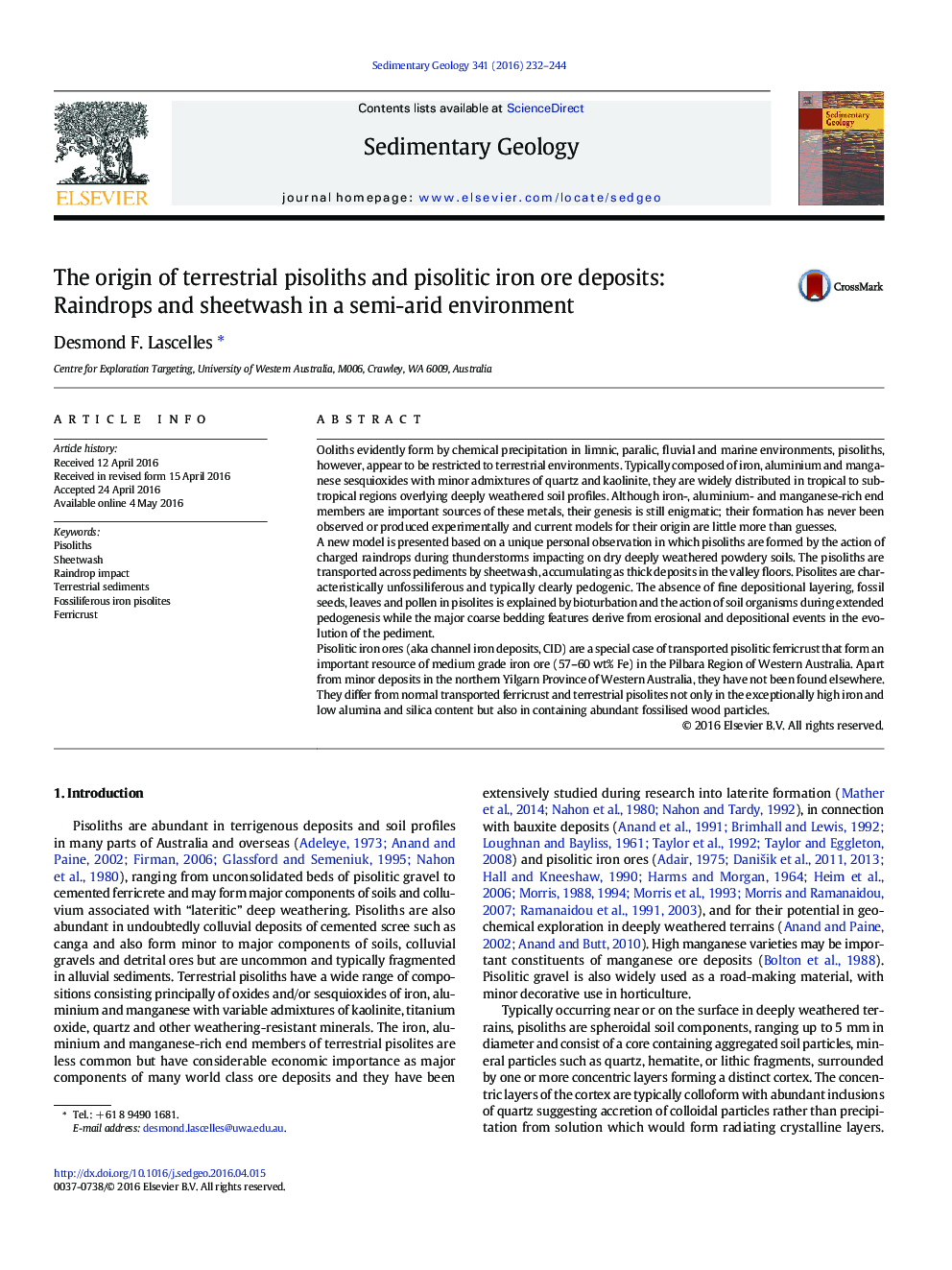| Article ID | Journal | Published Year | Pages | File Type |
|---|---|---|---|---|
| 4689015 | Sedimentary Geology | 2016 | 13 Pages |
•The paper reviews the occurrence and research history of pisoliths.•A new model for the formation of pisoliths is presented.•The paper reports the first ever sighting of the actual formation of pisoliths.•A new model is presented for the origin of pisolitic iron ore deposits that gives credible explanation for the sedimentary and petrographic features of the deposits.
Ooliths evidently form by chemical precipitation in limnic, paralic, fluvial and marine environments, pisoliths, however, appear to be restricted to terrestrial environments. Typically composed of iron, aluminium and manganese sesquioxides with minor admixtures of quartz and kaolinite, they are widely distributed in tropical to subtropical regions overlying deeply weathered soil profiles. Although iron-, aluminium- and manganese-rich end members are important sources of these metals, their genesis is still enigmatic; their formation has never been observed or produced experimentally and current models for their origin are little more than guesses.A new model is presented based on a unique personal observation in which pisoliths are formed by the action of charged raindrops during thunderstorms impacting on dry deeply weathered powdery soils. The pisoliths are transported across pediments by sheetwash, accumulating as thick deposits in the valley floors. Pisolites are characteristically unfossiliferous and typically clearly pedogenic. The absence of fine depositional layering, fossil seeds, leaves and pollen in pisolites is explained by bioturbation and the action of soil organisms during extended pedogenesis while the major coarse bedding features derive from erosional and depositional events in the evolution of the pediment.Pisolitic iron ores (aka channel iron deposits, CID) are a special case of transported pisolitic ferricrust that form an important resource of medium grade iron ore (57–60 wt% Fe) in the Pilbara Region of Western Australia. Apart from minor deposits in the northern Yilgarn Province of Western Australia, they have not been found elsewhere. They differ from normal transported ferricrust and terrestrial pisolites not only in the exceptionally high iron and low alumina and silica content but also in containing abundant fossilised wood particles.
